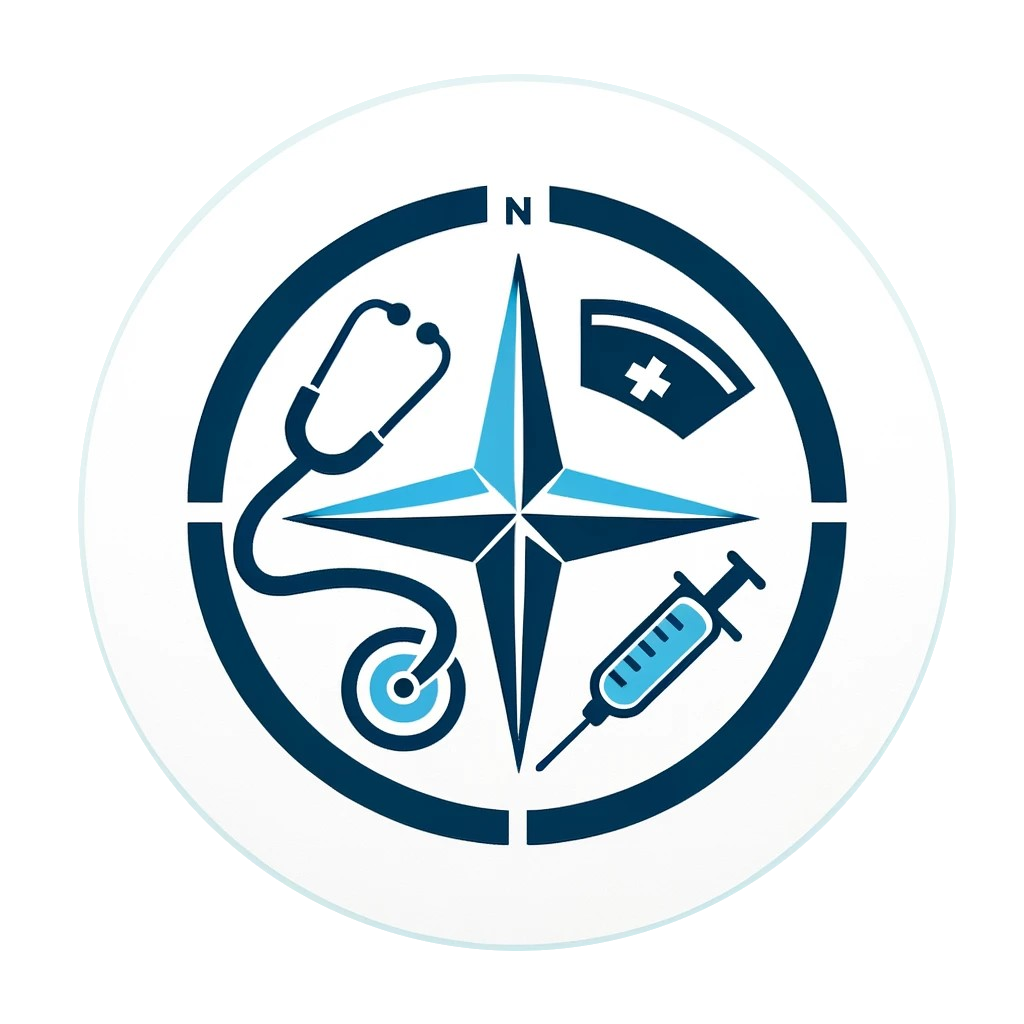Nursing school is packed with information-drug actions, lab values, assessment frameworks, and priorities. Memorizing it all can feel overwhelming. That's where nursing mnemonics come in. Mnemonics are short words, acronyms, or phrases that make complex information easier to remember.
In this guide, you'll find commonly used, widely accepted mnemonics that nurses and students rely on every day. These aren't a replacement for deep understanding or clinical judgment, but they're powerful tools to make learning and recalling information much easier.
💊 Pharmacology & Disease Mnemonics
-
M
Morphine - Pain management and anxiety reduction
-
O
Oxygen - Support oxygenation if SpO₂ <90%
-
N
Nitroglycerin - Vasodilation for chest pain
-
A
Aspirin - Antiplatelet therapy
-
F
Face drooping - Ask patient to smile, check for facial asymmetry
-
A
Arm weakness - Test bilateral arm strength
-
S
Speech difficulty - Listen for slurred or garbled speech
-
T
Time to call 911 - Immediate emergency response
-
S
Salivation - Excessive saliva production
-
L
Lacrimation - Excessive tearing
-
U
Urination - Incontinence or urgency
-
D
Defecation - Bowel incontinence
-
G
GI upset - Nausea, cramping
-
E
Emesis - Vomiting
🧪 Lab & Electrolyte Mnemonics
-
M
Muscle weakness - Progressive skeletal muscle weakness
-
U
Urine changes - Oliguria or anuria
-
R
Respiratory distress - Shallow, ineffective breathing
-
D
Decreased cardiac contractility - Weak, irregular pulse
-
E
ECG changes - Peaked T waves, widened QRS complex
-
R
Reflex abnormalities - Hyperreflexia progressing to areflexia
-
C
Change in bowel/bladder habits
-
A
A sore that doesn't heal
-
U
Unusual bleeding/discharge
-
T
Thickening or lump
-
I
Indigestion or trouble swallowing
-
O
Obvious change in wart/mole
-
N
Nagging cough/hoarseness
🎯 Nursing Priorities & Frameworks
-
A
Airway - Patent airway ALWAYS first priority
-
B
Breathing - Adequate ventilation and oxygenation
-
C
Circulation - Hemodynamic stability and perfusion
-
S
Sleep disorders - Sleep pattern disturbances
-
P
Problems with eating/feeding - Nutritional concerns
-
I
Incontinence - Bladder/bowel control issues
-
C
Confusion - Cognitive changes or delirium
-
E
Evidence of falls - Fall risk assessment
-
S
Skin breakdown - Pressure ulcer risk
🩺 Patient Assessment Mnemonics
-
O
Onset - When did it start? Sudden or gradual?
-
L
Location - Where is the pain? Does it radiate?
-
D
Duration - How long does it last?
-
C
Character - Describe the pain (sharp, dull, cramping)
-
A
Aggravating factors - What makes it worse?
-
R
Relieving factors - What makes it better?
-
T
Timing - When does it occur? Pattern?
-
S
Signs/Symptoms - Current complaints
-
A
Allergies - Known allergic reactions
-
M
Medications - Current prescriptions and OTC
-
P
Past medical history - Previous illnesses/surgeries
-
L
Last oral intake - Food and fluid consumption
-
E
Events leading up - What happened before onset?
💡 How to Master Nursing Mnemonics
🧠 Memory Techniques
- Visual association: Create mental images for each letter
- Story method: Turn mnemonics into memorable stories
- Repetition: Practice daily during clinical rotations
- Context learning: Use mnemonics with real patient scenarios
📋 Practice Strategies
- Quiz yourself: Cover the meanings and test recall
- Teach others: Explain mnemonics to study partners
- Apply clinically: Use during patient assessments
- Create variations: Adapt mnemonics to specific units
⚡ Quick Review Tips
- Priority mnemonics: Master ABC, FAST, MONA first
- High-frequency use: Focus on assessment tools like OLDCART
- Emergency situations: Know life saving mnemonics by heart
- NCLEX preparation: Practice with scenario based questions
🎯 Pro Study Tip
Don't just memorize the letters, understand the clinical reasoning behind each mnemonic. This deeper understanding will help you apply them correctly in high pressure situations and answer complex NCLEX questions.
📚 Recommended Memory Aid Resources
Study materials that complement these memory techniques
Nursing Memory Aids & Mnemonics
Memory TricksComprehensive collection of nursing mnemonics, memory aids, and study techniques to master complex medical concepts faster and more effectively.
View on Amazon (affiliate link)💡 Study Tip: This resource works best when combined with our free mnemonics guide above and regular practice in clinical settings. Use memory aids to support, not replace, thorough understanding of nursing concepts.
Looking for more nursing tools and resources?
🛍️ Browse All Nursing Essentials🌟 Your Mnemonic Mastery Journey
These nursing mnemonics are your clinical companions tools that transform complex medical information into memorable, actionable knowledge. From emergency assessments to medication administration, each mnemonic serves as a cognitive safety net in critical moments.
Remember: consistent practice turns these memory aids into automatic responses. Start with the fundamentals (ABC, FAST, MONA), then gradually expand your toolkit as you advance through your nursing career.
Continue Your Learning Journey
References
- American Cancer Society. (2023). Cancer Warning Signs and Symptoms. Retrieved from ACS Website.
- NICHE Program. (n.d.). SPICES Tool for Geriatric Nursing. Retrieved from NICHE Website.
⚠️ Educational Disclaimer
This nursing mnemonics guide is for educational purposes only and should supplement, not replace, comprehensive nursing education and clinical judgment. Individual learning outcomes may vary. Always follow current evidence-based protocols and institutional policies in clinical practice.
Transparency: This page contains Amazon affiliate links for study resources. As an Amazon Associate, we earn from qualifying purchases. See our Privacy Policy for full details.
💙 Support Our Free Content
Your support helps us continue creating free nursing content. Explore our Nursing Essentials page to see our recommended tools and resources.
View Nursing Essentials